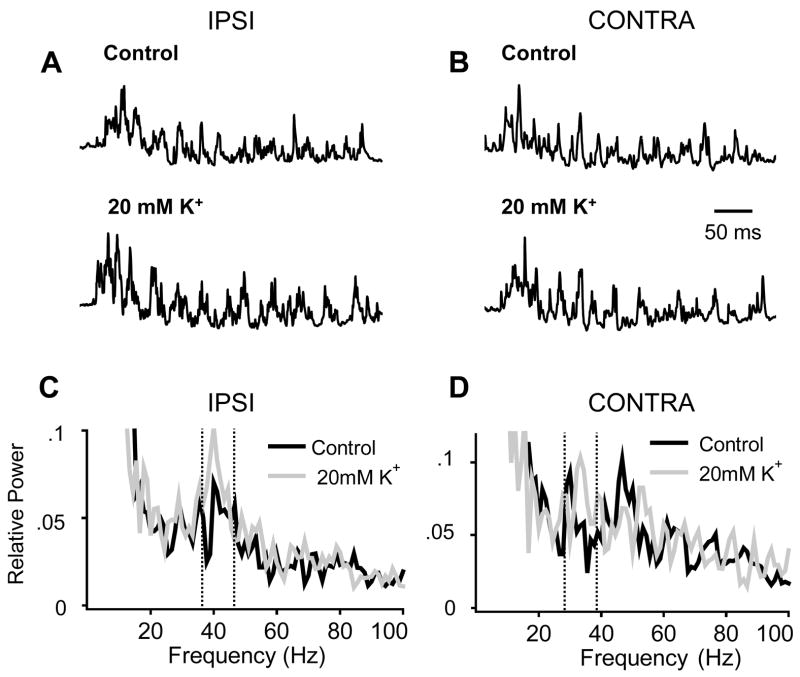Figure 4.
High K+ increases oscillation power when unilaterally applied to the XII nucleus. A and B. Representative raw filtered (1–200 Hz bandpass) inspiratory bursts recorded from the IPSI (A) and CONTRA (B) XII rootlet. The top traces are inspiratory bursts recorded in the control condition. The bottom traces are inspiratory bursts recorded following local perfusion of 20 mM K + to the IPSI XII nucleus. Same time scale applies to all inspiratory bursts. C. Ipsilateral average relative power spectra in the control condition and following local perfusion of 20 mM K + to the IPSI XII nucleus. Unilateral excitation of the XII nucleus increases oscillation power within the bin containing the dominant peak (36–46 Hz). D. Contralateral average relative power spectra in the control condition and following local perfusion of 20 mM K + to the CONTRA XII nucleus. Unilateral excitation of the XII nucleus increases oscillation power within the bin containing the dominant peak (29–39 Hz). When we averaged data for the overall population of experiments in which the XII nucleus was unilaterally excited, this increase in oscillation power was not statistically significant. The bins containing the dominant peak are marked by vertical dotted lines in the IPSI and CONTRA average relative power spectra.

